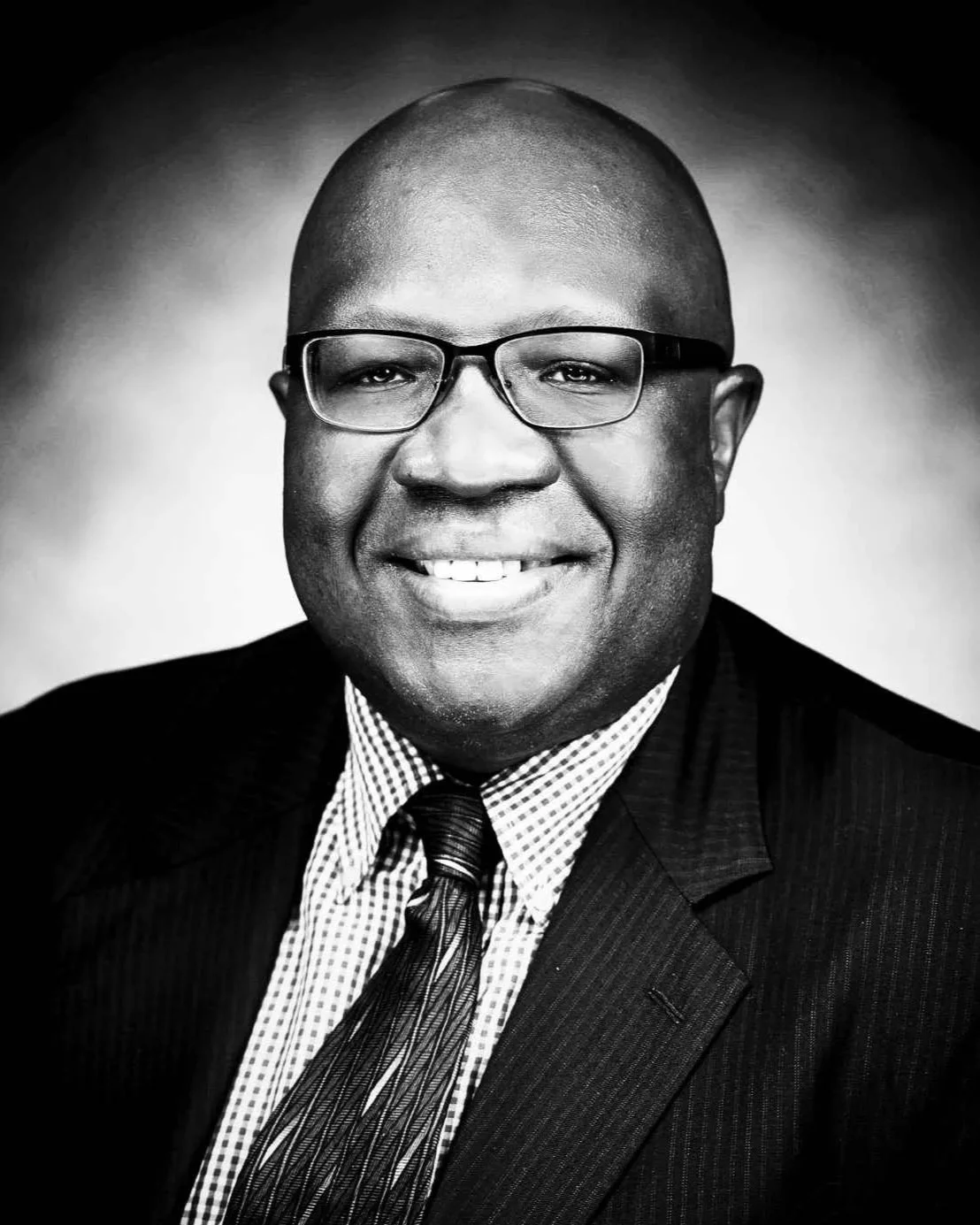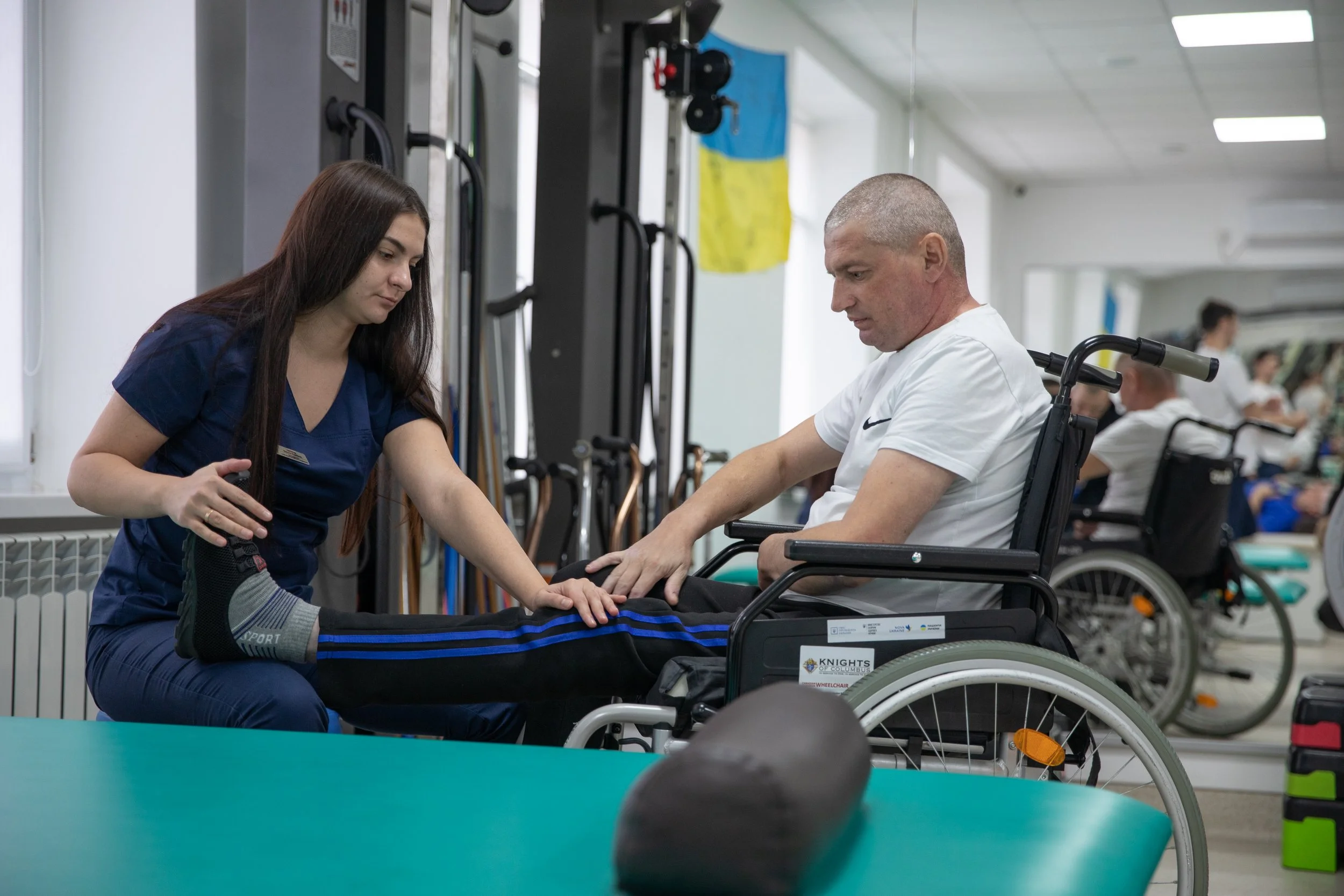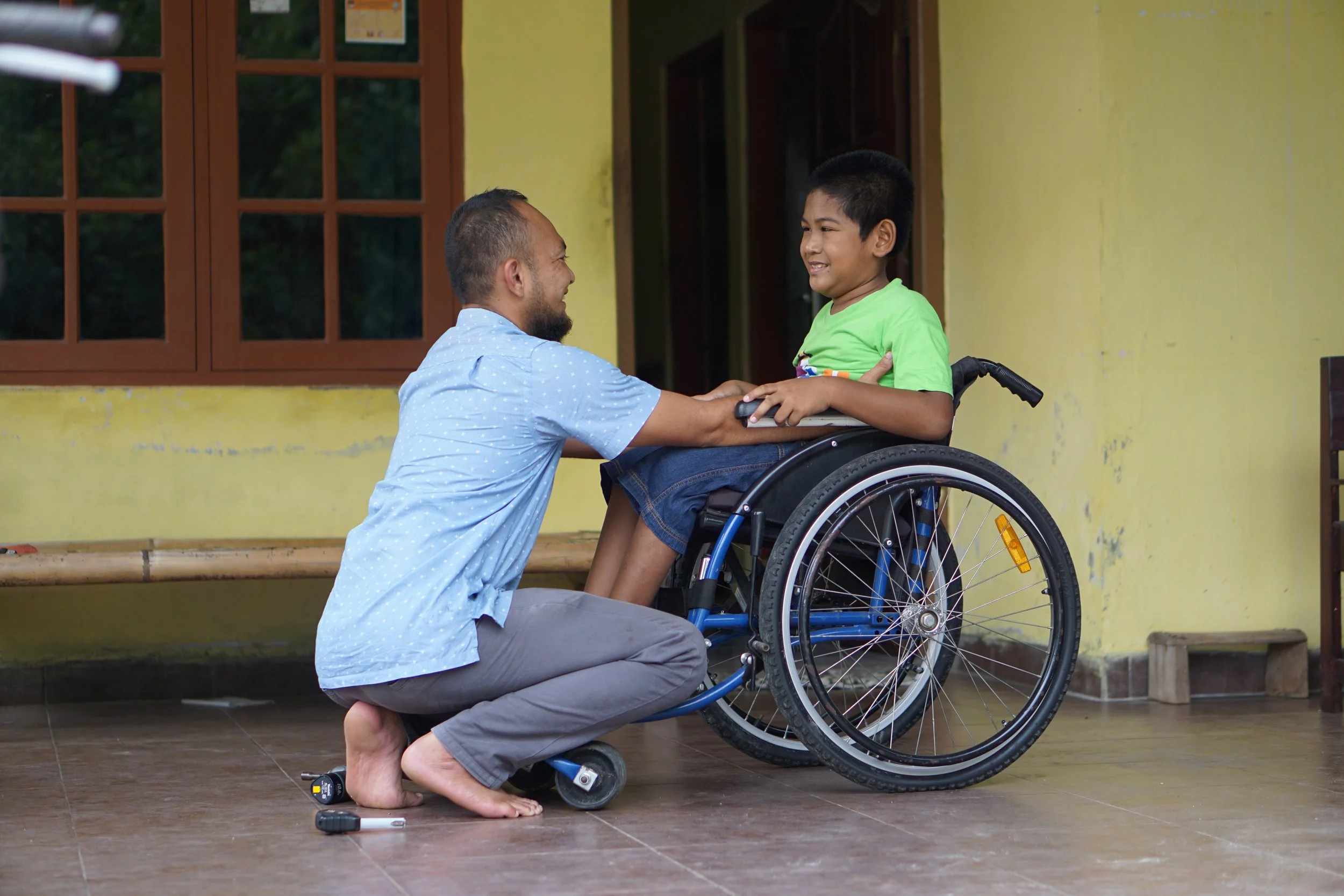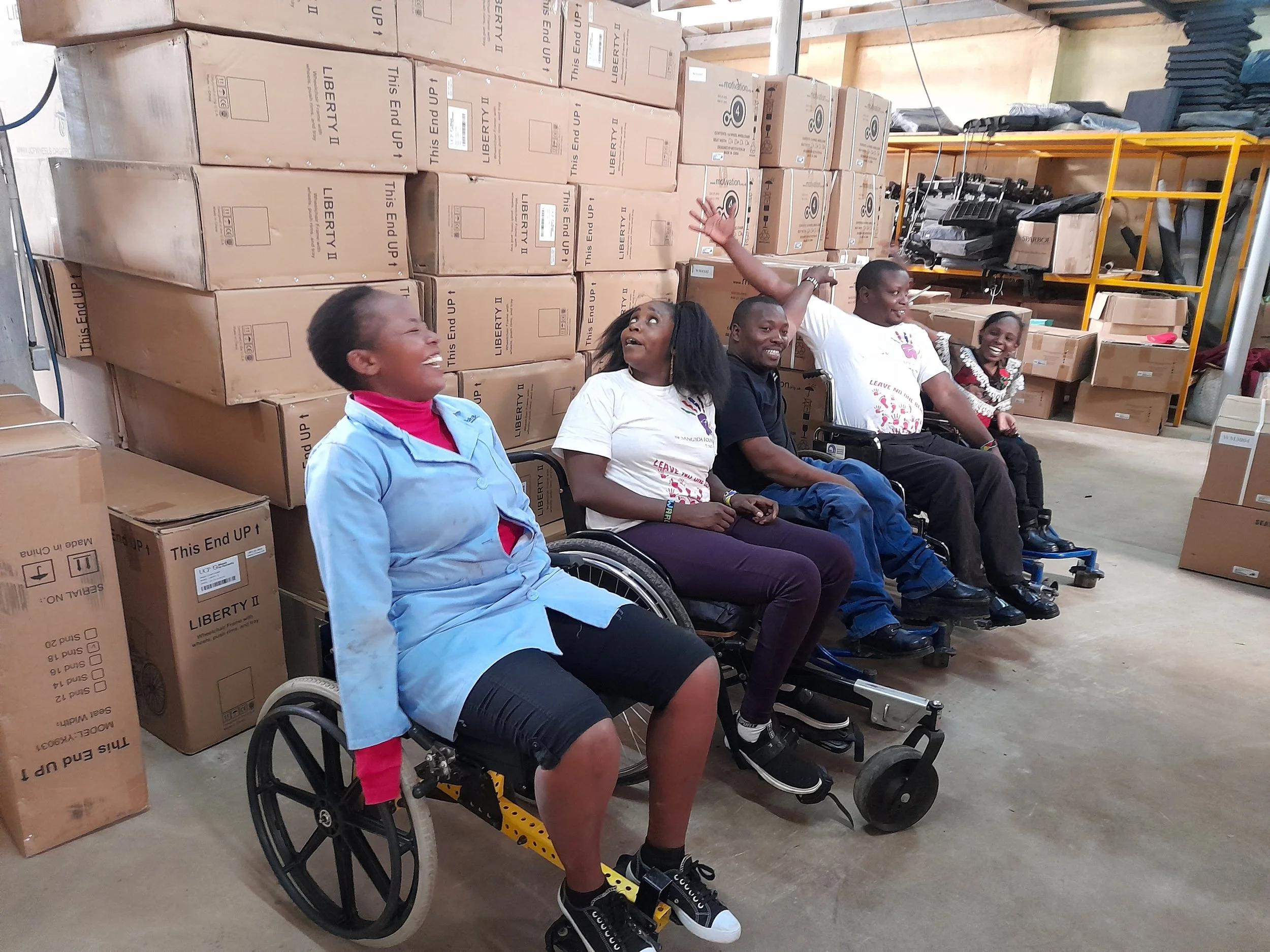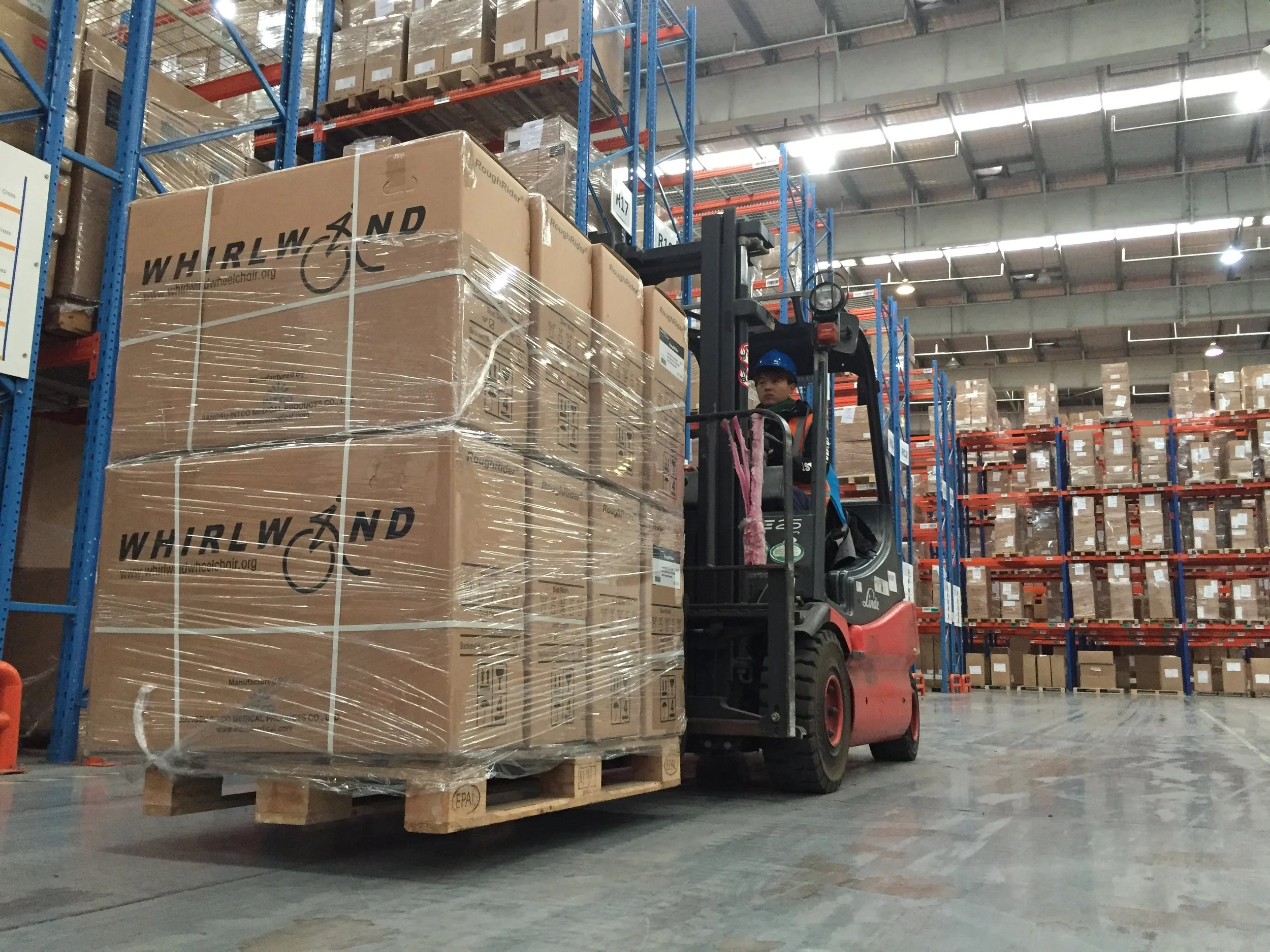Charles Redding On Advancing Disability Inclusion And Global Health Systems With Assistive Technology
Charles Redding is the Executive Director of Momentum Wheels for Humanity (MWH), an international nonprofit that expands access to quality rehabilitation services and assistive products for people with disabilities globally.
He also leads CLASP, MWH’s social enterprise that increases access to high-quality assistive products worldwide.
Charles has extensive senior leadership experience, including 23 years with Johnson & Johnson as a manufacturing and supply chain executive. Before joining MWH in 2024, he served as CEO and President of MedShare International, a non-profit delivering surplus medical supplies and equipment to underserved communities while supporting local capacity through training and repair services.
Driven by a deep commitment to equity and inclusion, Charles is guiding MWH to expand its reach, strengthen rehabilitation systems, and create more opportunities for people with disabilities. Under his leadership, MWH delivers custom-fit wheelchairs, trains local healthcare workers, advocates for policy change, and supports people affected by conflict and disaster.
Charles discusses global barriers to disability inclusion, the urgent need for accessible rehabilitation and assistive technology services, and how social enterprises like CLASP are advancing equity through scalable, sustainable business solutions.
Highlights from the interview (listen to the podcast for full details)
[Indio Myles] - To start off, can you please share a bit about your background and what led you to work in social impact and disability inclusion?
[Charles Redding] - I’ve spent my entire career addressing social causes and fighting health-related inequalities. I’ve been doing this for over 35 years, working either for a healthcare-related company or a mission-driven organisation.
As you mentioned, I was CEO and President of MedShare International, which focused on improving access to quality medical supplies and equipment. This is something I’m deeply passionate about.
Even during my time with Johnson & Johnson,
I had the opportunity to see firsthand the critical need for medical supplies, and how something as seemingly simple as a wheelchair can be life-saving and transformational for families. That commitment is part of my DNA, and I’m proud to continue this important work.
I’m a global person, and I’ve worked in India, China, Mexico, and many other countries. I love working internationally and continuing to fight inequalities wherever I see them.
You’re the Executive Director of Momentum Wheels for Humanity. Can you share more about the organisation and how it’s working to expand access to rehabilitation services and assistive products for people with disabilities globally?
It’s what I call a powerful organisation. Our mission is clear. We promote greater inclusion for people with disabilities globally, and our primary focus areas are mobility, therapy, advocacy, and empowerment.
One of the things we’ve done since I came on board is develop a strategic framework for our activities. We’ve identified three key pillars to guide the execution of our programs.
The first pillar focuses on strengthening rehabilitation and assistive technology (AT) services. In this area, we support the development of rehabilitation services within health systems, which are often underdeveloped or entirely lacking.
The second pillar focuses on assistive technology supply and provision. Through our social enterprise (CLASP) and other programs, we’re increasing global access to high-quality, affordable, and appropriate assistive products. This is a critical component of the services we deliver.
The third pillar is something I’m especially passionate about: inclusive disaster response.
Too often, people with disabilities are excluded from emergency response efforts. We work to bolster their resilience before, during, and after emergencies. This includes pre-positioning products specific to the needs of people with disabilities, to ensure their requirements are met in times of crisis.
That’s a summary of our organisation. It’s been going extremely well. We have global operations, including a team working in Ukraine providing rehabilitation services, and we’re active in El Salvador. Through CLASP, we’ve shipped to over 70 different countries and continue to grow our impact.
Can you share more about CLASP, the social enterprise arm of Momentum Wheels for Humanity, and how it’s helping to scale access to assistive technology?
CLASP stands for Consolidating Logistics and Assistive Technology Supply Provision. We launched the initiative about 10 years ago. so we’re celebrating its 10th anniversary this year.
Back in 2015, CLASP started as a groundbreaking initiative aimed at improving access to a diverse range of high-quality, affordable wheelchairs, primarily in low- and middle-income countries. It’s also expanded to include other mobility products.
CLASP was created to address several barriers, many of which are supply chain related. One of the main issues is supply itself. In many low- and middle-income countries, governments rely on donations, which means the supply of assistive products is inconsistent. Often, donated products are inappropriate, distribution is inefficient, and access is inequitable. We’re working to change that.
Another challenge is cost and limited choice. Available products are often either prohibitively expensive, low in quality, or unable to be safely adapted to the user’s environment. We’re addressing these gaps by ensuring access to appropriate, high-quality, and affordable assistive products.
The third key barrier is a lack of trained providers. Many healthcare professionals are not well-trained in wheelchair provisioning and have limited exposure to the range of products needed to meet users’ diverse needs.
People often associate wheelchairs with basic transport chairs like those seen in hospitals, but it’s far more complex. Many users need posterior support or custom sizing, which requires precise measurements across various dimensions.
CLASP operates as a hub stocking a wide variety of adult and paediatric wheelchairs, posterior support devices, walking aids, cushions, and more. Our base is in the Shanghai Free Trade Zone in China, which allows us to efficiently connect manufacturers and communities, identify needs, and provide appropriate solutions.
I’m incredibly passionate about this social enterprise. We’re continually expanding our reach, increasing our shipments to more countries, and always looking for ways to improve health outcomes and restore dignity to people with mobility challenges. As I mentioned earlier, we’ve now shipped to over 70 countries and continue to grow our global impact.
What are the major barriers people with disabilities face in accessing rehabilitation services, especially in low-resource settings around the world?
I touched on this earlier, particularly in relation to wheelchair users, but it’s important to emphasise the scale. Around 70 million people globally need a wheelchair but don’t have access to one.
That’s the reality. When it comes to rehabilitation more broadly, upwards of 2.4 billion people (that’s one in four people worldwide) could benefit from some form of physical rehabilitation.
Unfortunately, in low- and middle-income countries, this need is largely unmet. More than 50% of people in those regions do not have access to rehabilitation services. One of the core issues is that it’s not considered a priority. Rehabilitation is often not integrated into national health systems, and it’s not seen as a necessary part of healthcare.
Our approach at Momentum Wheels for Humanity is to integrate rehabilitation and assistive technology (AT) services at all levels of healthcare. We work directly with governments to help achieve this. We also advocate for greater investment, because very often, there’s simply no budget allocated to these essential services. We’re pushing to make rehabilitation and AT a healthcare priority.
Another major barrier is training. In many places, healthcare workers aren’t trained in rehabilitation. That’s why we’re investing heavily in training rehabilitation professionals, improving education, and working directly with universities to enhance clinical programs. We’re bringing in expertise to “train the trainers,” so to speak.
Raising awareness is also a big part of what we do. We’re continuously emphasising the importance of rehabilitation and assistive technology services. Ultimately, our goal is to make rehabilitation a priority, build capacity, and strengthen overall health systems to deliver quality services that improve health outcomes.
Do you see opportunities for innovation or new developments in assistive technology that could boost equity and inclusion?
That’s exactly what it’s going to take for real change. One thing I forgot to mention earlier is that I’m a chemical engineer by training, so a lot of my thinking and strengths come from that engineering background!
We’re now living in a world shaped by artificial intelligence, and I believe AI is going to play a significant role, especially in areas like voice recognition and other technologies that support people with various forms of disability. I can also envision robotics having a major impact.
I like to think big. If you look at science fiction, you’ll see visions of wearable technologies and innovations that allow people to move and interact in ways we can’t yet imagine. I truly believe that one day wheelchairs may become obsolete. That could be through advances in stem cell research, robotics, or other technologies. Ultimately, I think people will have more options, and that’s what innovation provides, possibility and choice.
Before we reach those technological breakthroughs, there’s a huge opportunity to deepen our understanding of the problems. I don’t think we fully comprehend how limiting it is when someone can’t participate in society or can only participate in a limited way. My focus is on helping people reach their full potential, whatever that looks like, by giving them real, viable options.
Technology and innovation will be essential. Even something like CLASP is a great example of innovation, but not necessarily the high-tech kind. CLASP is innovative through its design and delivery of assistive technology. We’ve created a one-stop shop for products that are diverse, appropriate, and community-specific. That’s a big deal when you consider that, otherwise, people might have to go through 30 different groups to get what they need.
Innovation doesn’t always have to be grand or futuristic. Sometimes, it’s about improving what we do today, through better understanding, smarter systems, and solutions that truly address the root causes of exclusion, not just the symptoms.
Do you have any advice for emerging leaders who are trying to drive social change through a social enterprise or other impact-led organisation?
Firstly, I want to say congratulations if you’re even thinking about this path. This work is truly needed, now more than ever.
My biggest piece of advice is to turn your pain into your purpose. Many nonprofits and social enterprises are born out of personal experiences or challenges. If you have that pain point, use it to fuel your purpose and think big. I always ask our organisation, “How can we create a world without limits, a world made for everyone?” When you embrace big thinking, you open yourself up to a wider range of solutions. You won’t box yourself in, and that freedom leads to more innovative and inclusive approaches.
The third piece of advice is something I hear debated often: the idea that you can’t do well while doing good. I want to challenge this. It’s absolutely possible to succeed in your career while making a positive impact. That used to feel like a trade-off, but it isn’t anymore.
Major corporations are now finding ways to tackle social issues, and there are plenty of opportunities within those frameworks. Or, if you prefer, you can start your own venture. There are so many resources and like-minded individuals out there to support you.
You can do well and do good, and when you find that sweet spot, it’s truly the best of both worlds. Keep going. Stay passionate about your work, and thank you in advance for championing those who are often left out of the conversation and the solutions.
Are there any inspiring projects or initiatives you’ve come across recently that are creating positive change?
A couple of examples come to mind. Years ago, a friend of mine, Dr. Derreck Kayongo, started the Global Soap Project, and I thought it was just fascinating.
You know all that soap left behind in hotel rooms? He figured out a way to collect it, melt it down, create new bars, and then distribute it. He sold some of it to middle-income markets, and used that revenue to provide soap to African communities that lacked basic hygiene resources. I found that initiative so simple, yet so powerful.
Another example is from my time working with the Coca-Cola Africa Foundation. As you can imagine, producing Coke requires water, but so does life. Water is essential for community wellbeing. They launched a major project called RAIN (Replenish Africa Initiative), which provided over 7 million people across 41 countries with access to clean water. They used a variety of solutions like building wells in some places, developing transport systems from lakes in others, and even innovating ways to sterilise water in remote areas.
What’s inspiring about both projects is how they identified a problem, found a solution, and figured out how to bring the two together in a way that worked for the communities they were serving. That kind of creativity and impact is what I find truly inspiring.
To finish off, are there any books or resources you’d recommend to our listeners?
I’m a lifelong reader, so I’ll share a couple of key recommendations. One book that continues to be a classic, even though it’s been out for over a decade, is Start With Why by Simon Sinek. If you haven’t read it, I really encourage you to do so.
Often, people jump straight to thinking about what they want to do and how they will do it without first understanding their why. That applies to both individuals and organisations, especially those just starting out. You need to ask yourself: why do I do this, and how can I solve that why? That clarity makes all the difference.
Another book I highly recommend is Disability Visibility, edited by Alice Wong. As I mentioned earlier, there’s a saying: “There is no ‘for us’ without us.” This book is a powerful collection of stories from people with disabilities, some visible, some invisible. It really opens your eyes to the impact of exclusion. It offers insights you might not even think about. Often, we rush in to solve a problem we think we understand without actually asking the people affected.
Those are two books I’d strongly recommend. Beyond those books, just keep reading. Stay curious and open-minded. There’s always more to learn.
Initiatives, Resources and people mentioned on the podcast
Recommended books
Start with Why: How Great Leaders Inspire Everyone to Take Action by Simon Sinek
Disability Visibility: First-Person Stories from the Twenty-First Century edited by Alice Wong

